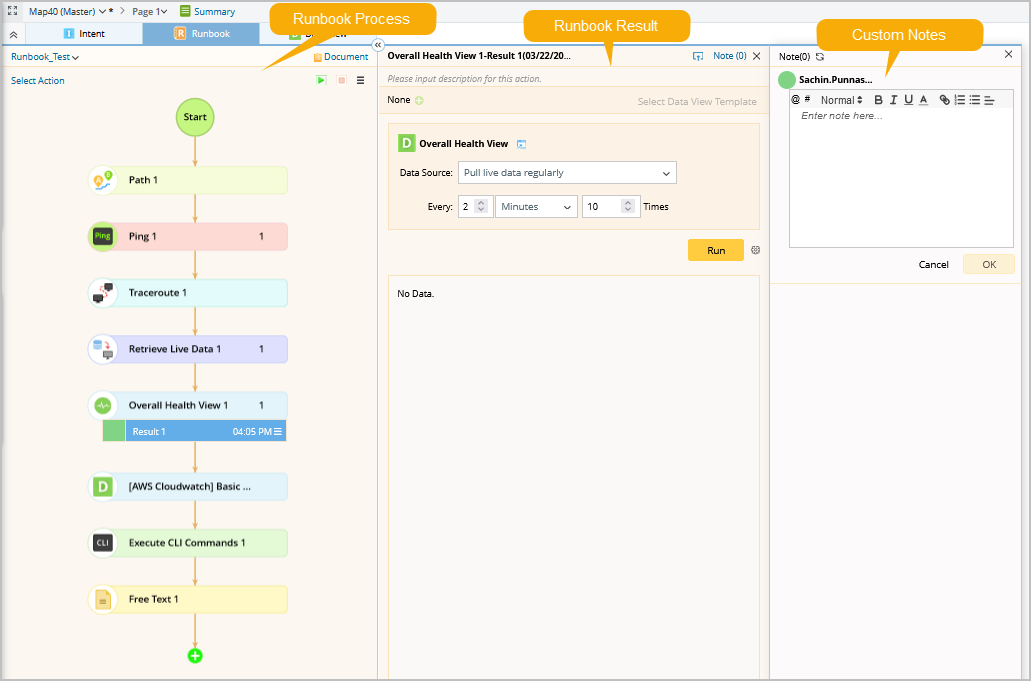Runbook-based Interactive Automation
NetworkBrain Runbook represents an automated workflow. It provides a visual way to codify a network troubleshooting process into an executable, reusable, and documentable workflow, to elevate collaboration efficiency. By leveraging Runbook, you can minimize the operations to create a troubleshooting flow. Besides, senior engineers can digitize their knowledge into a runbook template to streamline the best practices for the entire team.
Main UI Components
The main Runbook UI components are illustrated in the following diagram. 
- Runbook Process Pane: displaying the workflow diagram in a Runbook.
- Runbook Result Pane: displaying the outputs of running the action nodes.
- Runbook Custom Notes Pane: centrally displaying information, such as notes, descriptions, annotations, runbook document, runbook template document, and device qualification in a single pane.
Main User Flow
A major Runbook use flow is documenting the troubleshooting activity and process. The use flow includes the following steps:
- Execute troubleshooting actions on a map.
- Insert another Runbook template.
- Continue troubleshooting and annotating the analyst results.
- Save the current Runbook as a Runbook Template.
Another main use flow is to create a Runbook from a Runbook Template, run the Runbook and share the results within your team.
Main Use Cases
The three primary scenarios of using a runbook are illustrated as follows:
Record Activities and Process
For example, end users run Qapps, execute CLI commands, or use Ping/Traceroute to troubleshoot a problematic area. These actions are instantly recorded in a personal runbook, and each action can be annotated with thoughts or analysis to document the diagnosis process.
Example: Execute a Runbook to Troubleshoot A/B Path Issue
Share Knowledge and Know-How
For example, to proactively take measures to resolve network problems that might re-occur, power users create a Runbook Template and continue to improve it, to share best practices and know-how with junior engineers.
Re-executable to Maximize Data Value
For example, Tier 1 engineers execute CLI commands to troubleshoot problematic devices on a map, document the diagnosis and escalate the issue by mentioning next-level users in the Runbook. Tier 2 engineers re-execute the Runbook, continue to add a Compare node to evaluate data changes between the two CLI outputs, and then escalate the issue to Tier 3. Each Tier can continue to build on top of what has been done previously by checking the analysis results and notes.
This chapter covers the following topics:
- Runbook Template
- Execute CLI Commands
- Retrieve Live Data
- Run Overall Health Monitor
- Run a Gapp
- Run a Qapp
- Ping
- Traceroute
- Compare Network Data Changes
- Verify Application
- Run a Network Intent
- Collect Configlet
- Common Operations on Runbook
- Personal Runbook
See also: